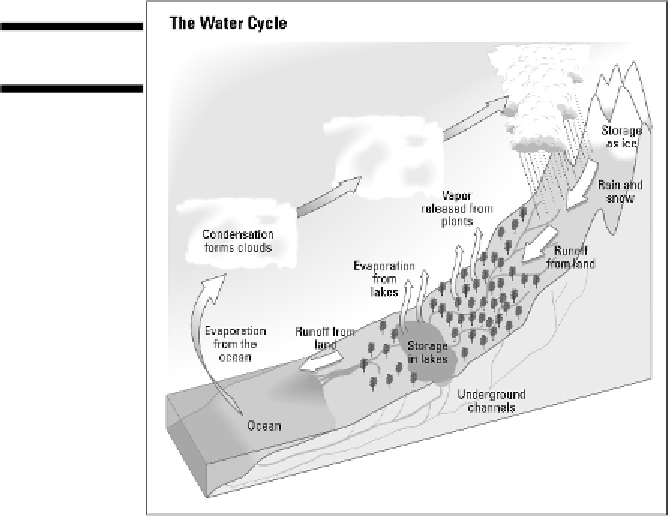Geography Reference
In-Depth Information
on the up-and-up. And this trend will continue for the foreseeable future. Thus, you may legit-
imately think of today's world map as a single frame of a very long movie. You know the plot:
Oceansarerising.Asfortheending...well,severaloutcomesarepossible.Allinvolvehigher
sea levels. Even if the change is slight, the impact will be significant. A rise of just a couple of
feet in the next century will affect millions of people. The highest elevations of several island
republics (The Maldives in the Indian Ocean, for example) are “just a couple of feet” above
sea level. Much of the Bahamas is “just a couple of feet” above sea level, and so too are large
areas of Bangladesh — one of the most densely populated countries in the world. And literally
dozens of populous port cities around the world have millions of people and trillions of dollars
of infrastructure “just a couple of feet” above sea level. Significant change is on way. The map
will look different. The world's geography will be different.
Getting Fresh with Water
Water, water everywhere. While the oceans may be the biggest water bodies out there, they're not
necessarily the most important — it's time to talk about some drops you can actually drink. And that
entails the
water cycle
(or
hydrological cycle
), which, as far as physical processes are concerned, is
a doozy. See Figure 8-4 for a look at the water cycle. You simply cannot live without it, and neither
could any other living thing that requires fresh water because the water cycle is the world's one and
only producer of fresh water — no water cycle, no fresh water — it's as simple as that.
Figure 8-4:
The
water cycle.

